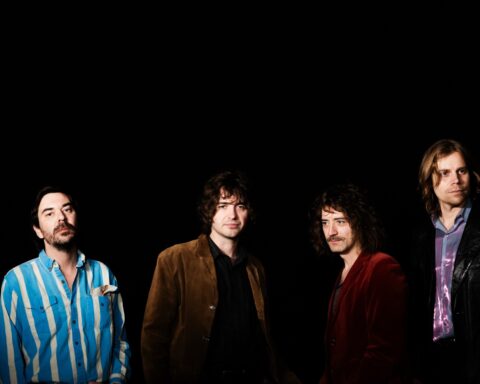Imagine yourself as Kimbra – a New Zealand musician known for having one of the most unique vocal styles of this side of the 2000s – you use your live performances to test the waters of self-discovery that closely intertwines with mental health and artistic growth, and share your experiences for others to learn from. This feature attempts to explore the intricate facets of Kimbra’s transformation from a recent essay she published on Substack, highlighting her own transition from a traditional performer to a “philosopher-artist” who harnesses her inner struggles to convey emotional connections through her music.
As Kimbra approached her Sydney Opera House performance, an intriguing dynamic emerged between her outwardly enthusiastic demeanour and the inner turmoil she grapples with; an internal conflict became the starting point for her to dive into the interplay of mental health and artistic expression together in her life.
Kimbra is the type of person who thrives on the edge of discomfort, a realisation deeply connected to her mental health journey, as she has acknowledged in the essay, there is an equilibrium between ease and creative stagnation, that she understands can cause a confronting, emotional discomfort in her music that can often lead to artistic breakthrough.
Silent contemplation and meditation have also become pivotal components of Kimbra’s self-discovery process, of which those practices have served as tools for her to navigate the uncertainties surrounding her musical career and emotional aftermath of a heart-wrenching breakup. Through mindfulness, Kimbra has been able to found solace and cultivate resilience against ambiguity, mirroring her experiences in life, and translating that aspect into her music to share.
Kimbra’s fascination with rhythm played an important part, as it extends to her underlying production, and often uses the power of rhythm to disrupt and reshape thought patterns – a concept deeply connected to cognitive psychology – through her stories, as Kimbra tries to convey the intricate interplay of conflicting emotions and thoughts in her music, she has without a doubt been able to achieved that through her performances.
Kimbra’s exploration of pitfalls through external validation is rooted in her understanding of mental health dynamics, and the notion of redefining her relationship with her audience, which emphasises the importance of fostering self-worth within oneself, rather than relying on the transient affirmations of fame and admiration.
Kimbra’s journey of finding self-worth within herself – paralleling concepts of self-acceptance – where she aims to create a shared reality with her audience; highlights the transformative power of vulnerability and the sense of connection it can foster.
In a world overwhelmed by stimuli, Kimbra’s longing for silence is a reflection of her desire for clarity and mindfulness – not just personally, but also professionally. In her recent stage performances, Kimbra has opened a world where she could listen to the room and invite her audience to join her in a meditative experience, emphasising the role of shared attention in promoting emotional well-being, which sees Kimbra use silence to challenging the traditional norms of catharsis.
By introducing moments of profound stillness in her songs, Kimbra gives her audience an opportunity for emotional release and reflection, demonstrating the therapeutic potential silence can bring. Kimbra’s exploration of silence as a form of catharsis echoes the notions of restraint and self-control, where she uses them as valuable tools for managing emotions. It is evident that Kimbra seeks to transform moments of stillness into places of rest and growth, aligning with the principles of emotion regulation in mental health, which she uses to its best potentional.
Kimbra’s artistic evolution serves as a compelling example of the deep connection of her artistic expression more than just lyrics and instrumentals, in fact, here her journey underscores the therapeutic power of music as a medium for addressing emotional struggles and fostering genuine connections. Kimbra’s departure from industry norms invites her to consider the role of vulnerability and mental health awareness in artistic innovation.
I wish more musicians have done what Kimbra has done with her Stack, as Kimbra’s transformation offers a poignant reminder of the therapeutic potential of artistic expression in navigating the complexities of the human psyche and breaking down societal stigmas surrounding mental health.










